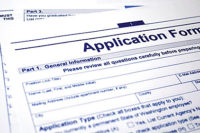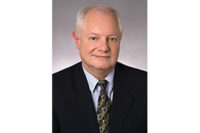IP in Depth: Avoiding Unnecessary Disclosures in Patent Applications
The distinction between disclosing how to practice an invention and explaining how an invention works is important to understand when drafting patent applications.

The disclosure of an invention in a patent application must meet the “enablement” provision of the U.S. Code, which states that the “specification shall contain a written description of the invention, and of the manner and process of making and using it, in such full, clear, concise, and exact terms as to enable any person skilled in the art to which it pertains, or with which it is most nearly connected, to make and use the same.”1
In patent applications, inventors are required to describe their inventions sufficiently to meet the “enablement” requirement; however, there is no requirement that inventors have to explain the details of how their inventions work. The distinction between disclosing how to practice an invention and explaining how an invention works is important to understand when drafting patent applications.
Meeting Enablement Requirements
Sufficiency of disclosure for purposes of enablement does not require an excessive amount of detail. As held by the U.S. Patent Office Board of Patent Interferences in Staehelin et al. v. Scher et al.: “the law does not require a specification to be a blueprint in order to satisfy the requirement for enablement.”2
The most common test that is applied to determine sufficiency of disclosure for purposes of enablement is based upon the amount of experimentation that might have to be conducted to practice an invention. A finding that an undue amount experimentation is necessary to practice a disclosed invention can lead to a determination that the enablement requirement has not been met. However, “[A] reasonable amount of routine experimentation required to practice a claimed invention does not violate the enablement requirement.”3 A list of factors that are to be considered in evaluating whether any necessary experimentation is undue can be found in the Manual of Patent Examining Procedures (MPEP), section 2164.01(a).
Inventing vs. Discovering
While striving to meet the enablement requirement, a patent applicant should avoid raising or discussing unnecessary details about how his/her invention works. The Constitutional provision for our patent laws categorizes “inventors” with their “discoveries.” As a result, the courts have long held that there is no distinction between “inventing” and “discovering.”4 Thus, while “inventing” can and often involves some degree of formal investigation, experimentation, testing, etc., inventing can just as well involve an unexpected discovery devoid of any formal work, effort or knowledge.
The federal circuit has held that: “It is axiomatic that an inventor need not comprehend the scientific principles on which the practical effectiveness of his invention rests.”5 Since an inventor is not required to understand how his/her invention works, it follows that there is no requirement that inventors explain how their inventions work in patent applications. A patent applicant only needs to disclose how to practice his/her invention. Explaining how his/her invention works can potentially create problems during examination.
Avoiding Obviousness
For an invention to be patented, it must avoid or overcome a finding of “obvious” during examination. In an ongoing attempt to have the present examining corps of nearly 8,250 examiners uniformly determine obviousness, the U.S. Patent and Trademark Office (USPTO) provides, updates and publishes examination guidelines for determining obviousness that are based upon patent case law. Obviousness nevertheless is inherently subjective.
Patent examiners are not supposed to use an applicant’s own disclosure during the examination of a patent application to formulate an obviousness rejection. However, if an application includes a detailed explanation about how the invention works, there is a risk that an examiner may develop the impression that the invention is understandable and therefore fundamentally obvious.
Patent applications have to satisfy the enablement requirement. Including detailed explanations of how an invention works is not required and can potentially cause problems during examination and therefore should be carefully considered and often avoided.
References
1. 35 U.S.C §112(a)
2. Interference No. 101,597, September 28, 1992
3. In re Wands, 8 USPQ2d 1400, 1404 (Fed. Cir. 1988)
4. Article I, Section 8, Clause 8
5. Fromson v. Advance Offset Plate, Inc., 219 USPQ 1137 (1983)
Looking for a reprint of this article?
From high-res PDFs to custom plaques, order your copy today!




